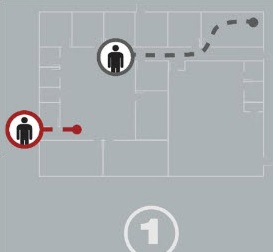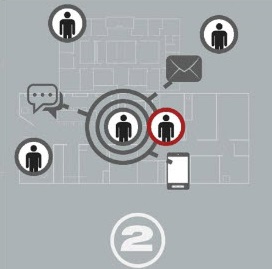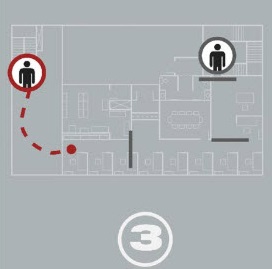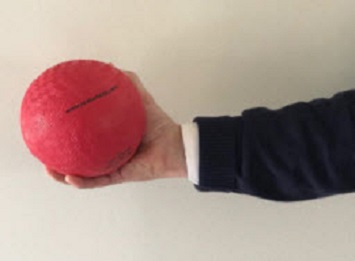For years now, the prevailing model for active shooter training has been “Run, Hide, Fight.” While this model was critical to help people understand they have a choice, the simple reality is that “Run, Hide, Fight” is a response…and not a plan. A unique emergency preparedness method—Red Ball Drills®—seeks to fill a major gap in policy and procedure development beyond the current standard. Additionally, the way these drills are run helps to avoid any of the traumatic outcomes for employees often associated with active shooter training drills.
Some of the training implemented under the “Run, Hide, Fight” paradigm focuses far too much on the “fight” element, with some programs going so far as to include fake guns, rubber bullets, and aggressive behavior. But fear is not conducive to training, and there is no dramatic evidence demonstrating that this form of preparation is helpful.
So while the standard training remains effective as a simple response message (for active shooter situations) the Red Ball Drills are the groundbreaking answer to develop actual management protocols for an active shooter event.
What Is a Red Ball Drill?
The premise of the drill is simple—a moderator with a stopwatch presents a red ball to an employee. The red ball represents an incident, such as the report of shots fired, and it is the signal that the exercise has started. Now that an incident has begun, what do you do?
Presenting the red ball is the “go” signal for training—it’s not a fake gun, it’s not the sound of gunfire, it’s not screaming, shouting, or other aggressive behavior. Upon this “go” signal, the employee is now engaged in a site-specific discussion on critical response process. The Red Ball Drill then becomes akin to a live, moving tabletop exercise, wherein the goal is to decrease the response time in performing appropriate action, such as confirmation of a threat and moving towards safety.
With this approach, the overall framework of policies and procedures (as well as employees’ knowledge of them) is discussed. Gaps are identified utilizing the unique knowledge of staff who understand process in their facility. Policy and procedure evolve, preparedness is strengthened, and fear and trauma are removed in favor of focus and engagement.
These drills can be performed at any time over the course of a business day, resulting in no disruption of business continuity or time off for training. Such a model is more accommodating to a wider variety of organizational cultures across industries.
3 Phases, 3 Protocols
Every site is unique. The issues of a school are not the issues of a hospital, and so on. Developing effective procedures means having a clear understanding of site specifics. The process consists of three phases:
- Security document review
- Physical security assessment
- The Red Ball Drill

After the Red Ball Drill is performed, the process becomes cyclical, where security policies, assessments, and procedures are adapted to promote better performance in future drills. Good performance is based both on timing (i.e., the moderator’s stopwatch), and also proper implementation of three important protocols: Safety, communication, and control.

1. Safety
Red Ball Drills can quickly identify any gaps in organizational safety protocols. Do property managers, staff, safety teams, and security officers know what to do in order to manage an event? How quickly can people on the property move to a safe position? Do you have “safe areas” pre-identified that tell employees where they can relocate during an incident? Have staff members identified where they would run to if they evacuate the building. Assembly areas are not useful in an active shooter situation.

2. Communication
One of the most important aspects of effectively managing an emergency event is communication. During a Red Ball Drill, it will be discovered just how quickly the presence of a threat can be communicated to all affected staff and emergency services. Employees should know what forms of language to use and how to convey information during an emergency, and also know all the tools at their disposal, whether it be text, phone calls, or e-mail.

3. Control
Any delay will provide more time for emergency services and law enforcement to respond—examples include locking down the building, controlling use of any elevators or stairwells, and using fire gates, curtains, or doors. Physical tests and walkthroughs are an essential part of training.
Beyond Active Shooter
The format of Red Ball Drills makes them appropriate for all forms of emergency preparedness training, not just active shooter. A red ball can represent a variety of incidents, including assault, sexual harassment, abductions, or impending natural disasters. The drills are already used in “Cy-Phy” attack scenarios (where the “Cyber” threats merge with “Physical” threats or attacks which has already brought new ideas and policies around cybersecurity and physical threat issues). Even workplace violence or personal threat issues can use the “Cy-Phy” approach in Red Ball Drills for harassment or social messaging threats to better identify emerging problems. This flexibility makes it the ideal tool for testing safety, security, and emergency policies, procedures, and assessments companywide.
 To learn more about Red Ball Drills and how you can take your workplace violence and emergency preparedness training programs to the next level, view the on-demand webinar with Aric Mutchnick, President and CEO of Experior Group, Inc., Beyond Run, Hide, Fight: Workplace Violence Preparedness Training That Fits Your Organization. To learn more about Red Ball Drills and how you can take your workplace violence and emergency preparedness training programs to the next level, view the on-demand webinar with Aric Mutchnick, President and CEO of Experior Group, Inc., Beyond Run, Hide, Fight: Workplace Violence Preparedness Training That Fits Your Organization.
After this webinar, you’ll be able to:
|

